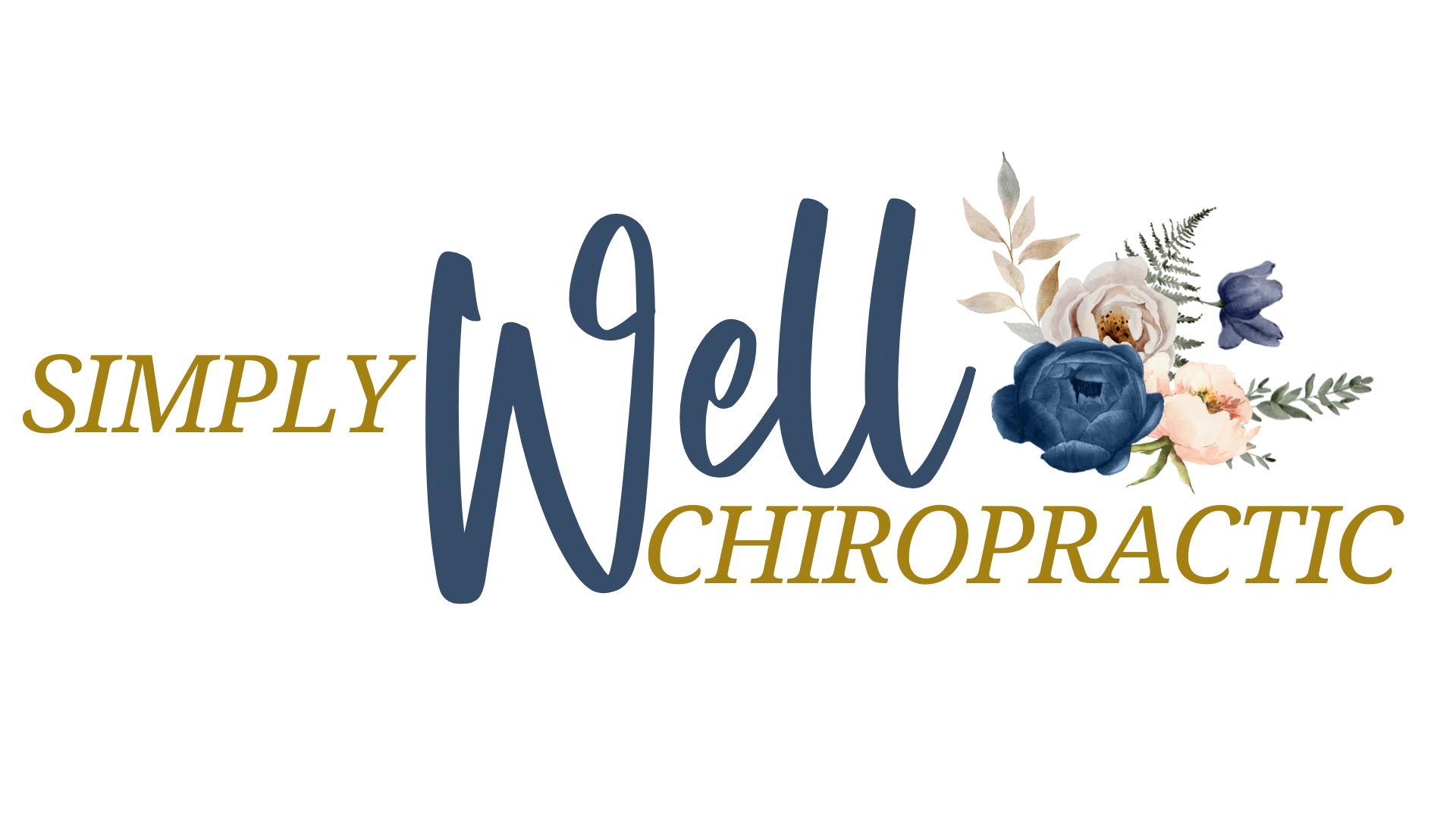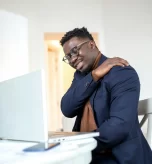The shoulder is one of the most complex and versatile joints in the human body, allowing a remarkable range of motion. This mobility, however, comes at the cost of stability and makes the shoulder highly susceptible to injuries, particularly to the rotator cuff. The rotator cuff, a crucial group of tendons and muscles, stabilizes the shoulder and facilitates various arm movements. Given its critical role and frequent usage, rotator cuff injuries due to overuse injuries, tears, and degeneration are common. These issues can significantly impact daily activities and quality of life. Patients with rotator cuff injuries at Simply Well Chiropractic in Cincinnati have experience success with SoftWave Therapy.
Traditionally, addressing rotator cuff injuries might involve a regimen of physical therapy, medication, and possibly surgery. However, these methods can be invasive, require lengthy recovery times, and carry the risk of complications. As medical technology advances, alternatives like SoftWave Therapy are emerging as promising non-invasive treatments. SoftWave Therapy utilizes a cutting-edge approach involving acoustic waves to stimulate the body’s natural healing processes, offering pain relief and functional recovery without the downsides of traditional treatments. This innovative therapy could be a game-changer for those suffering from rotator cuff issues, providing a safer, quicker path to recovery.
Understanding Rotator Cuff Injuries
The rotator cuff is a critical component of the shoulder, comprising four muscles—supraspinatus, infraspinatus, teres minor, and subscapularis—that converge into tendons to form a cuff around the head of the humerus (upper arm bone). This structure is pivotal for lifting and rotating the arm, as well as for stabilizing the shoulder within its joint. Due to its functionality and positioning, the rotator cuff is essential for many movements, from everyday tasks to more demanding physical activities.
Rotator cuff injuries can result from a variety of factors. Overuse is common among athletes or individuals whose activities require repetitive arm movements, such as painters or baseball players. Trauma, such as a fall where the arm is extended to break the impact, can cause acute tears in the rotator cuff tendons. Age-related degeneration also plays a significant role; as we age, our tendons wear down, making them more susceptible to injuries. Lastly, poor blood flow to the area can impair the body’s natural ability to repair tendon wear and tear, thereby increasing the risk of injury.
The symptoms of rotator cuff injuries can significantly interfere with daily life. Common symptoms include pain when lifting the arm, weakness in the shoulder, difficulty performing overhead activities, and a crackling sensation when moving the shoulder in certain positions. These symptoms not only limit physical activity but can also disturb sleep, particularly when lying on the affected side. Such limitations can diminish an individual’s quality of life, making it challenging to perform simple tasks that many take for granted, such as brushing hair, reaching for high shelves, or even dressing.
Traditional Rotator Cuff Treatments vs. SoftWave Therapy
Conventional Treatments for Rotator Cuff Injuries
Traditional approaches to managing rotator cuff injuries typically involve a combination of physical therapy, medications, and possibly surgery. Physical therapy aims to strengthen the shoulder muscles and improve flexibility, which can be effective for minor tears and strains. Medications, particularly anti-inflammatory drugs, are used to reduce pain and swelling, providing temporary relief. In more severe cases, surgery may be required to repair torn tendons, which involves a significant recovery period.
Introduction to SoftWave Therapy
SoftWave Therapy offers a non-invasive alternative to rotator cuff injuries that uses acoustic waves to promote healing and reduce pain without the need for surgery. This therapy operates on the principle of stimulating the body’s own regenerative processes, enhancing blood flow, and encouraging the repair of tissue at the cellular level. SoftWave Therapy is administered through a device that emits shock waves directly to the injured area, promoting faster and more natural healing.
Comparison of Recovery Times and Potential Risks
When comparing recovery times, SoftWave Therapy often leads to quicker results with less downtime than traditional methods. Patients can typically resume their normal activities shortly after treatment, without the need for the extended rehabilitation periods often associated with surgery. The non-invasive nature of SoftWave Therapy also means there are fewer risks involved; there are no incisions, no risk of infection, and no potential complications from anesthesia.
Overall, SoftWave Therapy presents a compelling alternative for those seeking a safer and faster recovery from rotator cuff injuries, minimizing the risks and downtime associated with more invasive treatments.
How Does SoftWave Therapy Work?
The Technology Behind SoftWave Therapy
SoftWave Therapy utilizes a sophisticated form of shock wave technology to treat rotator cuff injuries and other musculoskeletal conditions. This technology is centered around the use of unfocused low-intensity shock waves, which are acoustic waves carrying high energy to painful spots and myoskeletal tissues. These waves are generated by a device that converts electrical pulses into acoustic energy. This energy penetrates the skin and underlying tissues, targeting the injured areas.
The Process of Healing Stimulation
When the acoustic waves are applied to the affected area, they interact with the tissue, causing a cascade of biological responses. One of the primary mechanisms activated by these waves is the stimulation of microcirculation, which is the blood flow in the smallest blood vessels. This process enhances the blood supply and oxygenation of the treated area, which is crucial for natural tissue healing and regeneration.
Additionally, the energy delivered by the shock waves triggers the body’s natural cellular repair processes. This includes the release of growth factors that initiate the healing of damaged tissue and the recruitment of stem cells to the site of injury. The acoustic waves also help break down calcific deposits and scar tissue, which are often associated with chronic rotator cuff conditions.
Benefits for Rotator Cuff Injuries
The application of SoftWave Therapy to rotator cuff injuries offers several specific benefits:
- Pain Relief: The therapy reduces pain significantly, not only by improving blood flow but also by diminishing the inflammatory mediators that cause pain sensations. Patients often report a reduction in pain levels shortly after starting treatment.
- Tissue Repair and Regeneration: By stimulating the body’s natural healing processes, SoftWave Therapy promotes the repair of torn or damaged tendon fibers and muscles in the rotator cuff. This helps to restore the functional integrity of the shoulder joint.
- Improved Blood Flow: Enhanced circulation brings necessary nutrients and oxygen to the injury site, which speeds up the healing process and reduces recovery time.
- Inflammation Reduction: SoftWave Therapy helps to reduce swelling and inflammation, which are common symptoms of rotator cuff injuries and often contribute to pain and decreased mobility.
Overall, SoftWave Therapy provides a non-invasive, effective treatment option for rotator cuff injuries, offering substantial pain relief and facilitating a quicker return to normal activities. This therapy serves as an excellent alternative or adjunct to traditional treatments, appealing especially to those seeking to avoid the complications and downtime associated with surgery.
What to Expect During SoftWave Therapy
Step-by-Step Guide to a Therapy Session
- Initial Consultation: Before beginning treatment, you’ll have a consultation with Dr. Faith to discuss your symptoms, medical history, and suitability for SoftWave Therapy. This helps ensure that the therapy is tailored to your specific needs.
- Preparation: On the day of the session, no special preparation is typically required. You’ll be asked to sit or lie down comfortably in the treatment area, and the specific region of your shoulder to be treated will be exposed.
- Application of the Device: Dr. Faith will apply a gel to your shoulder to help transmit the acoustic waves effectively. The SoftWave device, which is similar in size to an ultrasound wand, will then be placed directly on the skin over the affected area.
- Treatment Process: The device emits short pulses of acoustic waves that penetrate the tissue. Each session typically lasts about 10 to 20 minutes, depending on the severity of the condition being treated.
- Completion: Once the session is complete, the gel is wiped off, and you can immediately resume most regular activities. Dr. Faith may give specific advice or recommendations, such as avoiding intense physical activity for a short period after the session.
Frequency and Duration of Treatment Sessions
The frequency and total number of SoftWave Therapy sessions can vary based on the individual’s condition and response to treatment. Typically, patients may undergo treatment 1-2 times per week, with a full course consisting of 4-8 sessions. Some may experience significant improvement within just a few sessions, while others with more severe conditions might need a longer treatment period to achieve optimal results. Your body will continue to heal for an additional 8-10 weeks after your last treatment.
Expected Outcomes and Timing of Improvement
Most patients begin to notice an improvement in symptoms such as reduced pain and increased shoulder mobility within a few sessions. The beneficial effects of SoftWave Therapy can accumulate over time, with continued improvement observed as the treatment progresses. The therapy is designed to stimulate the body’s natural healing processes, so improvements may continue to develop even after the completion of the therapy cycle.
Patients can expect long-term outcomes to include a decrease in pain, enhanced mobility of the shoulder, and an overall improvement in the quality of life. These results can significantly reduce the dependency on pain medications and potentially avoid the need for more invasive treatments like surgery. Additionally, many patients report a sustained improvement that helps them return to their daily activities and enjoy a more active lifestyle without discomfort.
Who Should Consider SoftWave Therapy?
Ideal Candidates for SoftWave Therapy
SoftWave Therapy is particularly suited for individuals experiencing chronic pain and discomfort from rotator cuff injuries. It is an excellent option for those seeking alternatives to invasive procedures, or for patients who have not responded well to conventional treatments such as physical therapy or medications. Additionally, athletes looking for a quick recovery period to return to their sports activities, as well as older adults who might face higher risks from surgery, may find SoftWave Therapy especially beneficial.
Situations Where SoftWave Therapy Might Be More Beneficial Than Traditional Treatments
- Chronic Pain Management: For chronic shoulder conditions that have not improved with extended use of NSAIDs or physical therapy, SoftWave Therapy can offer a non-pharmacological solution to pain relief and tissue healing.
- Post-Surgical Recovery: Patients recovering from shoulder surgery can benefit from SoftWave Therapy to enhance the healing process and reduce the likelihood of scar tissue formation, potentially speeding up the overall recovery time.
- Avoidance of Surgery: Individuals who are candidates for surgery but wish to avoid the risks and long recovery associated with surgical procedures may choose SoftWave Therapy as a viable alternative to manage and possibly resolve their shoulder issues.
Schedule a SoftWave Therapy Appointment in Cincinnati
SoftWave Therapy represents a significant advancement in the non-invasive treatment of rotator cuff injuries, offering a compelling alternative to traditional surgical and non-surgical methods. With its ability to reduce pain, enhance tissue repair, improve blood flow, and decrease inflammation, SoftWave Therapy provides a holistic approach to healing that addresses both symptoms and underlying causes of shoulder discomfort.
For those suffering from rotator cuff injuries, whether from chronic conditions, acute injuries, or post-surgical recovery, SoftWave Therapy offers a safe and effective solution that minimizes downtime and avoids the complications associated with more invasive procedures. Its benefits extend not only to pain relief but also to restoring functionality and improving overall quality of life, enabling patients to return to daily activities and enjoy a more active lifestyle without the burden of shoulder pain.
If you are struggling with a rotator cuff injury and looking for a treatment option that offers relief without extensive surgery or prolonged recovery periods, SoftWave Therapy at Simply Well Chiropractic in Cincinnati might be the right choice for you. With a $49 Introductory offer that includes a consultation, treatment and treatment plan, patients are able to discover if SoftWave Therapy is the right treatment prior to making a commitment. Schedule an appointment below or call 513.271.1233 today.







